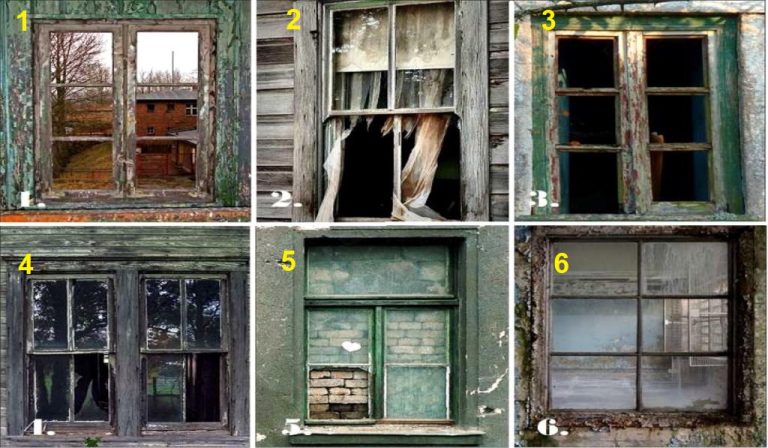How to Avoid Eye Contact with Your Neighbor Without Looking Creepy
Peripheral vision plays a crucial role in managing social interactions with neighbors. This visual skill allows individuals to observe their surroundings without direct eye contact, enabling them to assess the proximity of others and adjust their behavior accordingly. One effective method involves focusing on a distant object while using peripheral vision to monitor a neighbor’s movements.
This technique helps maintain awareness without appearing overly attentive. Reflective surfaces, such as windows or mirrors, can also be utilized to discreetly observe neighboring activities. By strategically positioning oneself, it becomes possible to maintain awareness of one’s surroundings without drawing attention.
It is essential to note that the purpose of employing peripheral vision in these situations is not surveillance, but rather to maintain appropriate social distances and avoid uncomfortable encounters. With practice, individuals can develop the ability to subtly monitor their environment while respecting others’ privacy and personal space. This skill can contribute to smoother social interactions and a more harmonious living environment in neighborhoods and shared spaces.
When you find yourself in close proximity to your neighbor and wish to avoid direct interaction, the power of distraction can be a useful tool. One effective strategy is to engage in a task or activity that requires your full attention, such as reading a book or working on a project. By appearing engrossed in your task, you can subtly signal to your neighbor that you are preoccupied and not seeking conversation.
Additionally, using headphones to listen to music or a podcast can create the impression that you are not available for socializing, further deterring any unwanted interactions. Another clever way to divert your attention is to focus on your surroundings, such as admiring the scenery or observing wildlife. By appearing captivated by the environment, you can create a natural barrier that discourages your neighbor from initiating a conversation.
It’s important to approach these distractions with subtlety and finesse, as overt attempts to avoid interaction can come across as rude or standoffish. By mastering the art of distraction, you can navigate social situations with your neighbor while maintaining a comfortable level of distance and autonomy.
Pretending to be engrossed in a phone call can be an effective way to deter unwanted interactions with your neighbor. By acting as though you are deeply engaged in a conversation, you can create the impression that you are not available for socializing. One tip for mastering the fake phone call is to use body language and facial expressions to convey the illusion of a genuine conversation.
Maintain a focused expression, nod occasionally, and use hand gestures as if you are actively participating in a dialogue. Another technique is to use a prop phone or earbuds without actually being on a call. By holding a phone to your ear or wearing earbuds, you can create the appearance of being occupied with a conversation.
It’s important to be mindful of your surroundings and avoid overacting, as an exaggerated performance can come across as insincere or disingenuous. With practice, you can develop the ability to convincingly simulate a phone call and effectively discourage any attempts at interaction from your neighbor.
Sunglasses can serve as a valuable tool for maintaining a sense of privacy and autonomy when interacting with neighbors. By wearing sunglasses, you can create a physical barrier that discourages direct eye contact and signals to your neighbor that you prefer to maintain a degree of distance. Additionally, sunglasses can help reduce the visibility of your eyes, making it easier to discreetly observe your surroundings without drawing attention to your actions.
One strategic approach is to wear sunglasses in outdoor settings where interactions with neighbors are likely to occur, such as in communal areas or during outdoor activities. By proactively using sunglasses as a shield, you can establish clear boundaries and communicate your preference for minimal engagement. It’s important to strike a balance between using sunglasses as a protective barrier and appearing overly aloof or unapproachable.
With thoughtful consideration and awareness, you can leverage the strategic use of sunglasses to navigate social interactions with your neighbor while maintaining a sense of comfort and control.
When faced with the prospect of interacting with your neighbor, adopting the “I’m deep in thought” stance can be an effective way to discourage unwanted interactions. By appearing contemplative and introspective, you can create the impression that you are preoccupied with your own thoughts and not seeking social engagement. One technique is to maintain a relaxed yet focused posture, such as sitting with your chin resting on your hand or gazing into the distance with a contemplative expression.
Another approach is to engage in an activity that requires mental concentration, such as writing in a journal or sketching in a notebook. By immersing yourself in a creative or intellectual pursuit, you can convey the message that you are not readily available for conversation. It’s important to approach this stance with authenticity and sincerity, as feigning deep thought can come across as disingenuous or contrived.
With practice, you can cultivate the ability to appear lost in your own world and effectively discourage unwanted interactions with your neighbor.
The subtle head nod can be a powerful tool for acknowledging your neighbor without engaging in direct eye contact. When you spot your neighbor nearby, a brief and understated nod can convey acknowledgment and recognition without necessitating a full conversation. This nonverbal gesture allows you to maintain a sense of politeness and courtesy while still preserving a comfortable level of distance.
Another technique is to pair the head nod with a friendly yet neutral expression, such as a small smile or raised eyebrows. This combination of nonverbal cues communicates warmth and acknowledgment while also signaling that you are not seeking prolonged interaction. It’s important to be mindful of cultural differences and individual preferences when using the subtle head nod, as some individuals may interpret this gesture differently based on their background and personal experiences.
With sensitivity and awareness, you can leverage the subtle head nod as a versatile tool for navigating social interactions with your neighbor.
Inevitably, there may be moments when accidental eye contact occurs with your neighbor despite your best efforts to maintain distance. In these instances, embracing the awkwardness can be an effective way to diffuse any tension and maintain a sense of lightheartedness. One approach is to acknowledge the accidental eye contact with a friendly smile or light-hearted comment, such as “Oops, looks like we both got caught looking!” This simple acknowledgment can help alleviate any discomfort and demonstrate that you are approachable and easygoing.
Another technique is to use humor to lighten the mood and shift the focus away from the awkwardness of the situation. By making a self-deprecating joke or sharing a humorous observation, you can create a sense of camaraderie and mutual understanding with your neighbor. It’s important to approach these moments with grace and humility, as genuine laughter and levity can help strengthen social bonds and foster positive relationships with those around you.
By embracing the awkwardness with confidence and humor, you can navigate any accidental eye contact mishaps with ease and grace. In conclusion, mastering the art of navigating social interactions with neighbors requires finesse, awareness, and tact. By leveraging techniques such as peripheral vision, distraction, fake phone calls, sunglasses, deep thought stances, subtle head nods, and embracing awkwardness, you can effectively manage your interactions with neighbors while maintaining a comfortable level of distance and autonomy.
With practice and mindfulness, you can cultivate the skills needed to navigate social situations with grace and confidence, fostering positive relationships with those around you while respecting personal boundaries and preferences.
FAQs
What are some non-verbal cues to avoid eye contact with your neighbor?
Some non-verbal cues to avoid eye contact with your neighbor include looking down at your phone, pretending to be engrossed in a book or magazine, or focusing on a task such as gardening or walking a pet.
Why is avoiding eye contact with your neighbor sometimes necessary?
Avoiding eye contact with your neighbor may be necessary in certain situations to maintain personal space, privacy, or to avoid unwanted conversations.
How can body language help in avoiding eye contact with your neighbor?
Using closed body language, such as crossing your arms or turning your body slightly away, can help in avoiding eye contact with your neighbor without appearing rude.
What are some polite ways to avoid eye contact with your neighbor?
Polite ways to avoid eye contact with your neighbor include offering a brief smile or nod and then redirecting your attention elsewhere, such as to a task or activity.
Is it possible to avoid eye contact with your neighbor without appearing creepy?
Yes, it is possible to avoid eye contact with your neighbor without appearing creepy by using subtle and non-threatening body language, maintaining a friendly demeanor, and being respectful of their personal space.








Can I get a call before you arrive?
Can I get a quote for multiple properties?